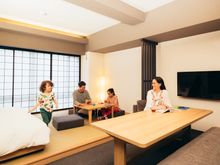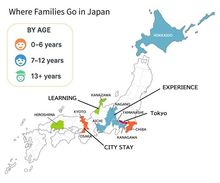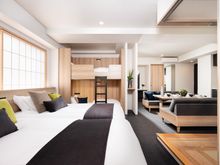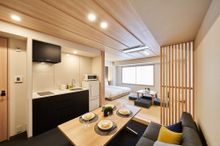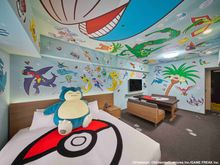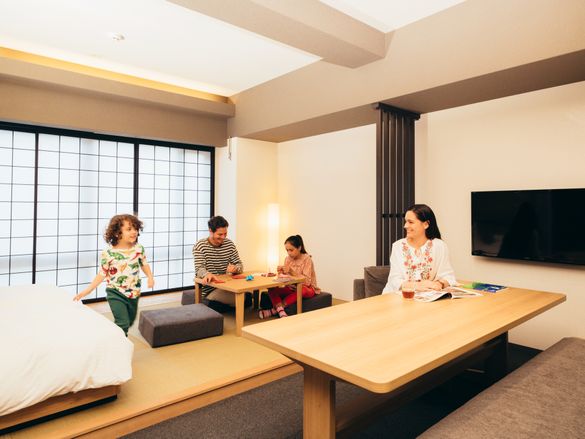 01 Sep 2025
01 Sep 2025
Tags: Japan, Japan Tokyo, Hotel, apartment hotel, Japan Travel, Japanese accommodation, MIMARU, Record, ranking, travel with kids, Family Travel, travel trends

Australian travel to Japan has reached a historic milestone, with more than 1.02 million Australians visiting between July 2024 and June 2025, according to statistics from Japan National Tourism Organization (JNTO). This marks the first time arrivals from Australia have exceeded one million, reflecting a 128% year-on-year surge. Against this backdrop, MIMARU, Japan's leading family-focused apartment hotel brand, has released exclusive new insights showing how Australian families are shaping this record-breaking wave of travel, revealing distinct destination choices and travel styles that evolve as children grow.
In 2024, the most visited prefectures by Australians were Tokyo (90.9%), Osaka (61.9%), Chiba (59.6%), and Kyoto (56.4%), with an average stay of 13.7 days. While these numbers cover all types of travellers, MIMARU — Japan's leading family-focused apartment hotel brand — conducted a targeted family survey that reveals distinct travel patterns based on children's ages and trip purposes.
Australian Families' Destination Choices in Japan – Insights by Children's Age
Between July 2024 and June 2025, 56,366 Australians stayed at MIMARU properties, with an average of 3.89 nights. On a single trip to Japan, they typically visited two to three different cities. A survey of 524 Australian families shows clear differences in travel style depending on the age of the eldest child. Compared with the Tourism Agency's “Inbound Consumption Trends Survey,” the contrasts are striking:
- All Ages – “Start with Tokyo”
Tokyo is visited by 90.9% of Australian travellers – almost twice the global average of 48.3% for all international visitors. Many families then continue on to nearby areas such as Chiba, Kanagawa, and Yamanashi, before travelling to Osaka, Kyoto, Nara, or Hiroshima. Ski resorts in Hokkaido and Nagano are also popular, chosen by more than 10% of families. - Ages 0–6 – “Safe and Easy City Travel”
Around 75% of families with younger children stay only in major cities such as Tokyo, Osaka, Kyoto, and Kanagawa. Urban trips are preferred for their easy transport access, shopping, and wide dining options – reducing travel stress for parents. - Ages 7–12 – “Expanding into Nature and Adventure”
Older children inspire trips to more experience-oriented destinations. Families increasingly choose Mt. Fuji and hot springs (Yamanashi, Kanagawa), Ghibli Park (Aichi), and ski resorts in Hokkaido (Tomamu) and Nagano (Hakuba), which are seeing a sharp rise in popularity. A new 'two-base' travel style – combining cities with nature – is rapidly emerging. - Ages 13+ – “Journeys of Learning”
Once children become teenagers, family trips expand beyond sightseeing to include education and discovery. Hiroshima (Peace Memorial Park) and Kanazawa (samurai residences, traditional crafts) are popular, as families seek to deepen understanding of history and culture first studied at school, transforming the trip into an even more meaningful experience.
Why Australian Families Choose MIMARU
- 27 apartment-hotel locations across Tokyo, Osaka, and Kyoto, all with excellent access to major stations
- Spacious rooms around 40–100 m² with kitchens, living areas, and laundry facilities (in-room or shared), allowing families to stay together comfortably
- 90%+ of guests are overseas families
- English-proficient, multicultural front desk teams from 38 countries and regions
- Family-friendly services such as same-day luggage delivery from Haneda and Narita airports (available for a fee)
“We are delighted to welcome more Australian families than ever before,” said Mao, Global PR Lead of Cosmos Hotel Management Co., Ltd. “As children grow, their curiosity expands, and we want MIMARU to be the place where families can experience both the excitement of Japan's cities and the richness of its culture and nature, together.”
This research highlights a powerful trend: as children grow, Australian families are transforming their trips from city sightseeing to deeper, more adventurous, and more meaningful journeys. MIMARU will continue to study what families seek in Japan and support them with practical, stress‑reducing services.
Sources
JNTO Visitor Statistics (June 2025, preliminary)
Japan Tourism Agency, Inbound Consumption Trends Survey (2024)
MIMARU Guest Destination Survey (July 2024 – March 2025)
-END-


